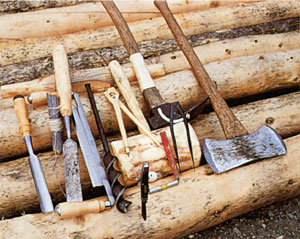Whether it was finding a way to get 20 gallons of fresh water to campsite from the water buffalo or lashing together a 3-pole tripod strong enough to support a swinging Scout, the Old Hickory Centennial Celebration last weekend was 100% pure hands-on activity from sun-up to sun-down. In an era when hands-on learning is disappearing from our schools the Boy Scouts continue to offer a quality program where a boy can feel secure and safe just being a boy... and boys like to build, saw, swing, hammer, and whatever else that is involved with action and activity. The
Old Hickory Council made this opportunity available once again last weekend for 1,400 council Cubs, Scouts, Venturers, and Explorers where a lot of kids chose outdoor activity over brainless video games and TV
.
The event was held last weekend at the scenic and spacious
Jomeokee park and campground which is also home for many area bluegrass festivals... but this weekend it belonged to us. Large spacious fields as far as the eye could see surrounded by beautiful picturesque mountains, particularly nearby
Pilot Mountain, is what made this an ideal location.
Through out the day the Boy Scout patrols, lead by their Senior Patrol Leader, competed with other patrols in a full spectrum of events that included everything from using a crosscut saw to saw a log in half to working as a team to put up a canvas tent. Since Scouts is mainly a youth led organization I spent most of my time in the field at each station cheering on the Scouts and looking for opportunities to encourage teamwork and good sportsmanship.

One popular event and opportunity to score points working as a team was the crosscut saw competition. Believe me it's not as easy as it looks. To saw off a chunk of wood in the least amount of time possible, both sawyers had to work in almost perfect synchronization with the push/pull or the blade would easily bend and stop sawing. The fellow sitting on the log above the saw in the picture to the right did a fantastic job, all day long, patiently working with the boys and teaching them how to do it right. It's adults like this that are the true heroes!
If you look closely at the picture to the left you'll see a thin piece of twine stretched across the fire bucket. This was the fire building station where the kids competed to test their fire building skills to burn through the twine in the least amount of time possible.
The teams were timed on how long it took to burn the twine then their points were determined. Sometimes frustrations ran high when once a flame quickly went to smoke and cinders. The "Flaming Beavers" patrol in the picture to the left took almost 15 minutes to burn the twine but they never gave up.
As seen in the pictures below, another station was the tripod lashing where a patrol had to connect three pieces of bamboo then use a non-supporting knot to swing one group member off the ground. Kids absolutely loved this event perhaps because their contraptions resembled something out of the jungle. Best of all every member of the team was important to their success, because if they were using the best possible strategy they would use their smallest member to swing from the tripod. This activity generated a lot of group spirit and pride as the crowd cheered them on.


Another challenging event was found at the knot tying station. Each member of the patrol randomly drew a card that had the knot they must tie written on it. As seen in the picture to the right the Scouts could use their Scout handbook for reference but I only saw one patrol that had theirs. Knots included the bowline, two half hitches, taut line hitch, square knot, and a clove hitch. This event required some patience if your knot tying skills were rusty.
For a locally led Council event I was impressed with this Centennial Celebration where everyone had a safe, active, and very hands-on weekend. Other events included first-aid, map & compass, numerous games, fishing contest, and setting up a canvas wall tent. Once again the Boy Scouts of America has come through in meeting these critical hands-on activities that every boy should have the opportunity to explore.
Every troop had way too much fun finding creative ways to transport their cooking and drinking water about 200 yards from the water buffalo to their campsite. The group seen in the picture above must have collapsed 10 times from laughing so hard at their own efforts and at their hilarious water shuttling contraption.



































































